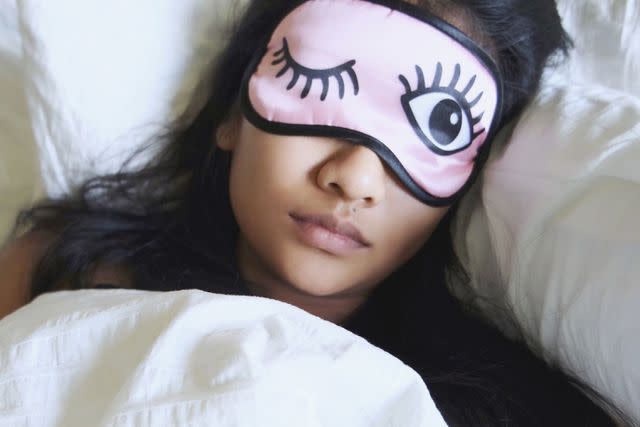8 Simple Ways to Heal Dry Skin Overnight, According to Derms
Expert tips on how to treat flaky, dry skin.
Though usually harmless, dealing with dry skin can get pretty frustrating. Not only does ongoing dryness lead to irritation and sensitivity, but it can also cause skin dullness, make fine lines and wrinkles to look more prominent, and lead to flakiness that messes with your makeup routine. All these are signs that you’re not getting enough moisture.
“Dry skin is an indicator that the skin barrier is compromised,” explains Carmen Castilla, MD, a board-certified dermatologist and the clinical instructor at Mount Sinai in New York. “Once the skin barrier is compromised, it is more likely to become irritated and sensitive.”
Prioritizing moisturization is the best way to combat this. Here are some derm-approved techniques you can try to help heal dry skin while you sleep.

Dalina Rahman/Getty Images
Skin Flooding
Skin flooding has made the rounds on TikTok over the last few months, but it’s actually an old-school tip dermatologists swear by. All you need to do is apply your serums and moisturizers on top of damp skin.
"Applying a moisturizer on damp skin can help seal in moisture. It also allows better penetration of your moisturizer, making it more effective,” Dr. Castilla says. “Wash your face using lukewarm water, gently pat your face dry leaving it a bit damp, then apply the moisturizer on top.”
Switch to an Oil-Based Cleanser
An oil-based cleanser is one of the easiest ways to infuse more moisture to your skincare routine, says Audrey Kunin, MD, a board-certified dermatologist and founder of DermaDoctor. In addition to removing even the most stubborn makeup, dirt, and oil from your skin, it lends a nice boost of moisture compared to gels and foams.
Layer Your Moisturizers
Layering moisturizing products over each other can also get more moisture to your skin. The rule of thumb is to layer from thinnest to thickest consistency, so start with a toner and/or essence, then move onto serum before your cream. Candace Marino, a medical aesthetician based in Los Angeles, even spritzes a hydrating mist in between these steps.
Skin Slugging
Another #SkinTok fave, “slugging” involves applying a thin layer of petroleum jelly over your skin to lock in moisture. It has a slime-like consistency, hence the name. Petroleum jelly is an occlusive ingredient, which means it creates a barrier over your skin that prevents water loss. Simply apply a very thin layer as the final step of your skincare routine, wait about 30 minutes, then go to sleep.
Keep a Humidifier in Your Bedroom
Ever noticed how your skin feels extra dry during winter, or whenever indoor heating or air conditioning is running? This is due to lack of humidity, but a humidifier can fix that problem real quick.
“Even in places with humid air outside, the indoor heating systems tend to significantly decrease indoor air humidity. Humidifiers will help release moisture into the air to help prevent the side effects of dry, cold winter air,” says Dr. Castilla. Just make sure to clean it regularly to prevent any mold issues.
Exfoliate Once Every Week or Two
Exfoliation plays a pivotal role in your skin’s moisture levels. “Without exfoliating the skin and removing dead buildup, your serums and creams are unable to penetrate,” Marino explains. “When you hydrate dead cells, you’re actually thickening the outermost layer of dead skin, so essentially, you’re wasting your products because they’re never able to absorb and go to work for you.”
She recommends using a very gentle chemical exfoliator about once per week. It’s important not to overdo exfoliation since this can have the inverse effect of causing dry skin.
Apply AHA Cream to Feet & Cover With Socks
Also dealing with super dry hands or feet? Dr. Kunin has a solution for you: “Apply a thick layer of a balmy lotion, cream, or ointment—preferably one containing 10% AHAs—then put on gloves or socks,” she says. “The product itself helps soften and exfoliate skin while the cloth covering creates humidity which boosts results.”
Get Your Beauty Sleep
You know that getting a full seven to eight hours of sleep can keep dark circles away and help you feel better, but it also helps heal dry skin.
“While sleeping, there is increased blood flow to the skin to help aid in skin repair,” explains Dr. Castialla. “Inadequate sleep reduces the skin's ability to repair itself, leading to skin barrier damage and dryness.” A consistent nighttime routine will pay off in spades.
For more Real Simple news, make sure to sign up for our newsletter!
Read the original article on Real Simple.
